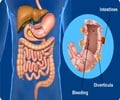Researchers will now work to identify opportunities for engaging oral health professionals in reducing childhood obesity.

‘The National Maternal and Child Oral Health Resource Center at Georgetown University has been awarded $747,689 by the Robert Wood Johnson Foundation to identify opportunities for engaging dentists, dental hygienists, and dental assistants in reducing childhood obesity by using evidence-based recommendations and strategies.’





Thus, the opportunity exists to engage oral health professionals in adopting approaches and providing evidence-based, consistent, and concise information and strategies to families to help reduce childhood obesity while also working to improve children's oral health. The project aims to identify evidence on what the scientific research tells us about:
- What is the role that oral health professionals can play in addressing childhood obesity.
- What has been learned from oral health professionals' efforts to address other systemic health issues and related risks and behaviors.
- How oral health professionals have addressed health policy and advocacy issues to reduce childhood obesity.
- What oral health coalitions and other organizations have done and could do to reduce childhood obesity.
The findings of the scientific review will be shared during a national conference of stakeholders, with the goal of refining evidence-based recommendations and strategies that oral health professionals, oral-health-related organizations, and others can employ to reduce childhood obesity.
This important work will be spearheaded by a collaboration consisting of OHRC, the American Dental Hygienists' Association (ADHA), the American Academy of Pediatric Dentistry (AAPD), the American Dental Association (ADA) and the Santa Fe Group. It will also include input and involvement from other stakeholders from academia, professional associations and societies, coalitions, government agencies, the dental insurance industry, the dental trade industry, philanthropic organizations, and community programs.
OHRC responds to the needs of professionals working in states and communities in addressing current and emerging public oral health issues. The resource center support health professionals, program administrators, educators, policymakers, and others, particularly those working in state maternal and child programs, with the goal of improving oral health services for pregnant women, infants, children, and adolescents, including those with special health care needs, and their families.
Advertisement
AAPD advocates for policies, guidelines, and programs that promote optimal oral health and oral health care for infants, children, and adolescents, including those with special health care needs.
Advertisement
The Santa Fe Group fosters policy and initiates actions to improve the health and well-being of the public by analyzing and disseminating health program and policy information, creating networks of concerned citizens, and developing advocacy programs to promote change for improved health.
Source-Newswise















